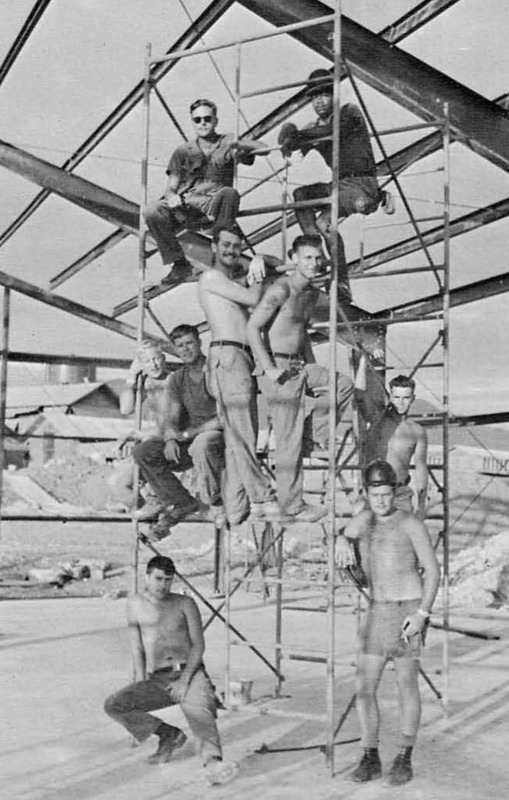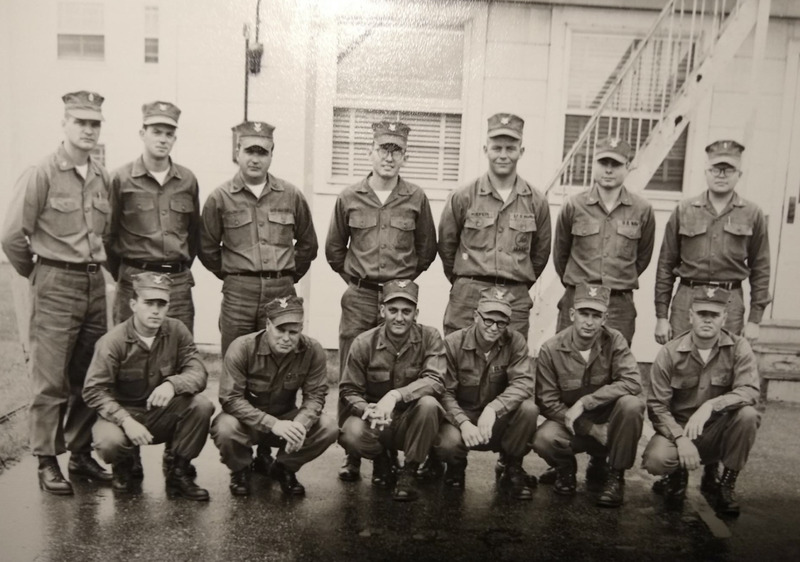"For a long time, I couldn't stop thinking about the war" | Impermanence of Aid and Post-War Reflections
Intended to impact the course of the war for the better, much of the work that Seabees completed were significant projects with comprehensive goals. However, the Seabees’ aid was also bound by the limitations of their commitment. Specifically, through the exploration of the Seabees’ civic action work in Vietnam, it becomes clear that one of the largest overlapping themes of these veterans’ stories include the impermanence of their aid.
The Impermanence of Aid
Although many Seabees were proud of the construction projects and the other work they undertook on their civic action missions, many expressed doubts about the long-term impact of their activities. In hindsight, many Seabees view themselves as transitory actors who temporarily aided Vietnamese villagers, but then left them to fend for themselves.
In his oral history testimony, Robert Sletten distinguished between the short-term benefits of his team’s work for local Vietnamese and the longer-term impact of U.S. civic action operations:
“I felt like we were, if not, we were not doing anything negative and in our own small way and in our own small place we were doing some things that were positive. But at the end of the time that I was there, they knew that some Americans were not out to get them or wreck their place or whatever, and in fact, really were earnest and trying to help. But then we left. And even though my team was replaced by another team– at the end of another six or eight months, eventually we left for good.”
In another oral history, U.S. Army veteran Neal Stanley echoes Sletten’s sentiments. Although he was not a Seabee, his service as an advisor to a South Vietnamese Army unit required close contact with Vietnamese counterparts. He notes, “...I spent a lot of time with the Vietnamese people. I got to know them. I got to appreciate what they were going through.” Among other things, he detected an underlying unease that some Vietnamese felt toward their American friends:
“And I think, you know, you talk to these young [Vietnamese] officers and they would say, “You know, Captain, we appreciate what you’re doing for us, but you’re going home. This is our home. And we’re here till the end.” So the commitment, the level of commitment, they pretty much realized that—and this was well before it was all over, but they pretty much realized what was going on. And I didn’t feel that they were telling me, “Great, we’re going to win this war and everything’s going to be fine,” because it wasn’t going to be fine. Regardless of who won, it was not going to be fine for them, because their station in life was not going to change at all as a result of this. And I learned a lot about the culture, the Vietnamese culture. You know, most of my time in the field was with the Vietnamese. I ate with them, slept with them, fought with them, understood completely why they didn’t want to fight at times. You know, they were, well, not ill-equipped, but pretty much unprepared and they didn’t have the deep commitment for what they were doing, as opposed to the Viet Cong or the North Vietnamese that had a passion for what they were doing in doing that. And, you know, their concern was, you know, “You’re gonna be gone, but we’re gonna stay here.””
Here, Stanley contemplates on the well-intentioned, but somewhat incorrect perception that temporary American aid would enact permanent, lasting changes. In this sense, the Americans were mere visitors who inserted themselves as a benefactor in the lives of local inhabitants who lived their own entire lives before their arrival, during their stay, and after their departure.
Seabees’ Reflections and Perspectives on American Involvement
Both the American Seabees who built and fought and the Vietnamese who observed their works first hand were highly cognizant of the impermanence of their aid. Both parties were acutely aware of the Seabees’ provisional stay in Vietnam, and I assert that this consciousness permeated and influenced both parties’ perceptions of each other, culminating in the sense that temporary commitment was sometimes unwanted, in the eyes of the Vietnamese. To elucidate, impermanence of Seabee (and general American) aid emphasized the notion that to some Vietnamese, the aid was neither drastically important nor dramatically life-changing for them.
William Culotta observes that US civic action projects were perhaps more life-changing to the Americans who undertook them than to the Vietnamese rural villagers they were intended to help. He reflects:
“I guess maybe the best way to clarify it is the impression that I had from the Vietnamese that I dealt with was they didn’t like the Americans necessarily. They didn’t like either forces [side in the war] necessarily. All they wanted to do was raise their crops and have their life. They didn’t care if they were communist. They didn’t care if they were a democracy. They didn’t care if they were green, yellow, or brown. They just wanted to have their life, their subsistence, and raise their crops. Maybe that’s a very naive perspective, but that’s the impression that I had.”
Terrence Fearon, a former Navy Seabee who served with MCB-6 during his service spanning the years from 1967 to 1971, had similar feelings:
“...my experience in Vietnam was the people didn’t want us there, the Vietnamese didn’t want us there, the whole North Vietnamese people didn’t want us here, and then the poor South Vietnamese were caught in the middle… and we’re thinking, “Well, what the hell are we doing here?””
The Seabees’ tours ended, and they came home. Despite the impermanence of their aid, it is abundantly clear that their experiences, singular and varied, stuck with them long after they left Vietnam. Additionally, post-war reflections of some of these Seabee veterans call back to their sense of duty and obligation to serve in the first place, regardless of their transitory presence in Vietnam. Near the end of our interview, Sletten ruminates:
“You know, for a long time, I couldn’t stop thinking about the war… On the one hand, I’m proud of my service… I think I'm kind of proud that I did it, that I went and did service for the country. Whether the country needed that service or not is debatable. And in retrospect, probably we didn't. I don't know how we could have not been involved in the war…”
Perhaps in this way, these narrators speak to the unfortunate futility of war. Regardless of how many roads they improved, rice warehouses they built, Chieu Hoi defectors they trained, the Seabees eventually left, and left in their trail an increasing threat of defeat by the North Vietnamese. As explored previously, this argument of the war’s futility is expressed in Douglas Porch’s Counterinsurgency: Exposing the Myths of the New Way of War, challenging the beliefs maintained by Rufus Phillips, respectively in his memoir, Why Vietnam Matters. Regardless of this contention, it is clear that many veterans’ post-war reflections are layered with the arguments made in light of the ongoing debate regarding the efficacy of counterinsurgency, and the voices highlighted in this exhibit reflect their sentiments both during, and after their service in Vietnam.
Conclusion
I hope this digital exhibit provides a small snapshot into the Navy Seabees during the Vietnam War. This exhibit is not intended to be an exhaustive examination into the Seabees' histories, experiences, and post-war reflections of the war, but I hope that this exhibit stands as a platform for at least some of the representative voices of the Vietnam War. I believe there is inherent value attached to the study of oral history, and the narratives explored here in this exhibit demonstrate just that. Individual experiences of the past and present have the power to influence and enact change for the future, and I believe one can gain invaluable insight when listening to someone's story.
Alessandro Portelli astutely expresses the value of oral history:
“Oral history, then, offers less a grid of standard experiences than a horizon of shared possibilities, real or imagined. The fact that these possibilities are hardly ever organized in tight, coherent patterns indicates that each person entertains, in each moment, multiple possible destinies, perceives different possibilities, and makes different choices from others in the same situation. These myriad individual differences, however, only serve to remind us that, beyond the necessary abstraction of the social science grid, the actual world is more like a mosaic or patchwork of countless different shapes, touching and overlapping, and sharing, but also cherishing their irreducible individuality.”
By studying the patchwork of voices and stories of the past, one can approach the future with the same understanding and respect. And, as U.S. Army veteran Neal Stanley suggests, "I think it’s important to talk about it for the historical basis of it, because history does repeat itself, and it certainly repeats itself if you don’t pay any attention to it."

